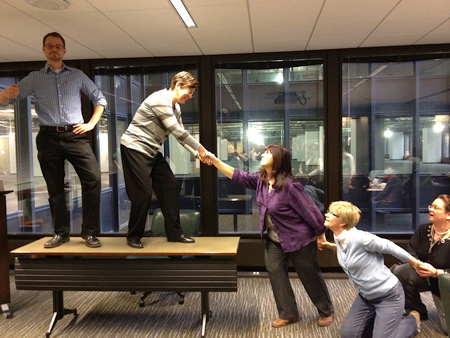Analyzing Primary Sources: Frozen Living Pictures
We know that primary sources engage students, helping them to personally relate to persons and events of the past and develop a deeper understanding of history as a series of human events. One way to enhance the connection and empathy is to have students analyze a primary source image, then create tableaux or frozen living pictures. The goal is to collaborate with a group to recreate the event or scene that the image creator captured or a scene that students think happened just before or just after. This activity really helps students get into the hearts and minds of people from another time and circumstance.
Frozen living pictures are created when a group of people pose themselves together to create a meaningful image. Each person may represent a person, animal or thing. Although poses are frozen and there should be no movement, the entire body should be actively engaged in the frozen action. Successful frozen living pictures often have four elements: think FLEA.
Focus
Group members should not be scattered throughout the room but within a defined performance space so the picture has a focal point that draws viewers in.
Levels
Group members should pose at different levels—sitting, kneeling, leaning, standing, etc.—to increase visual interest.
Expression
Each member should display an intentional and meaningful expression; an inappropriate smile or scowl can weaken the power of the image.
Action
At least one group member should be frozen in a physically active task.
While frozen, you may go around and tap one person at a time, asking that student to finish the sentence “I hope . . .” or “I believe . . .” responding as they believe the character they are portraying would.

